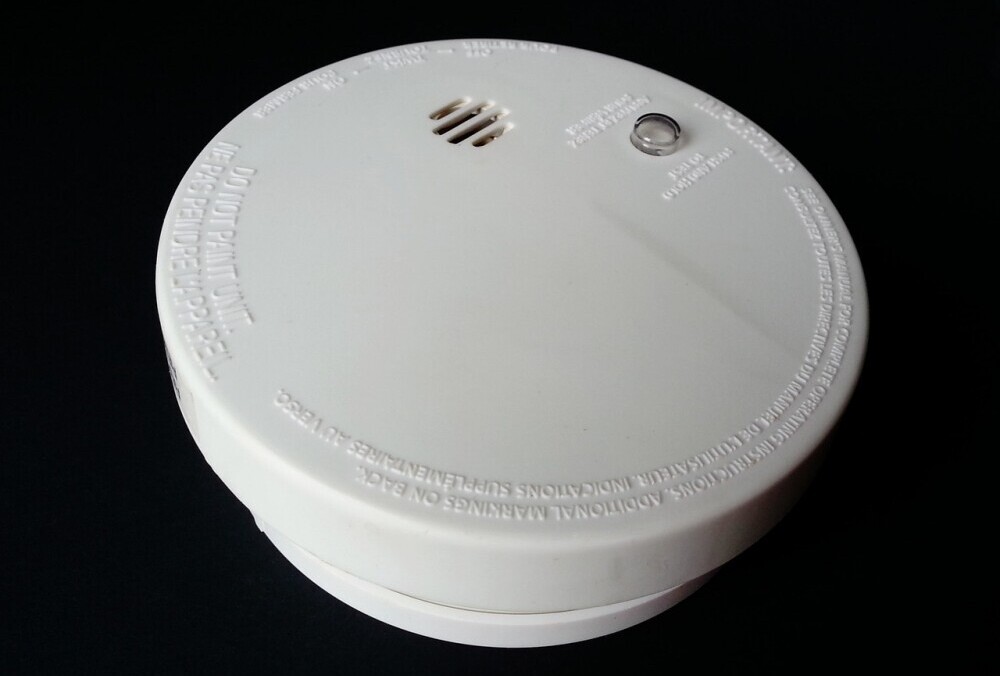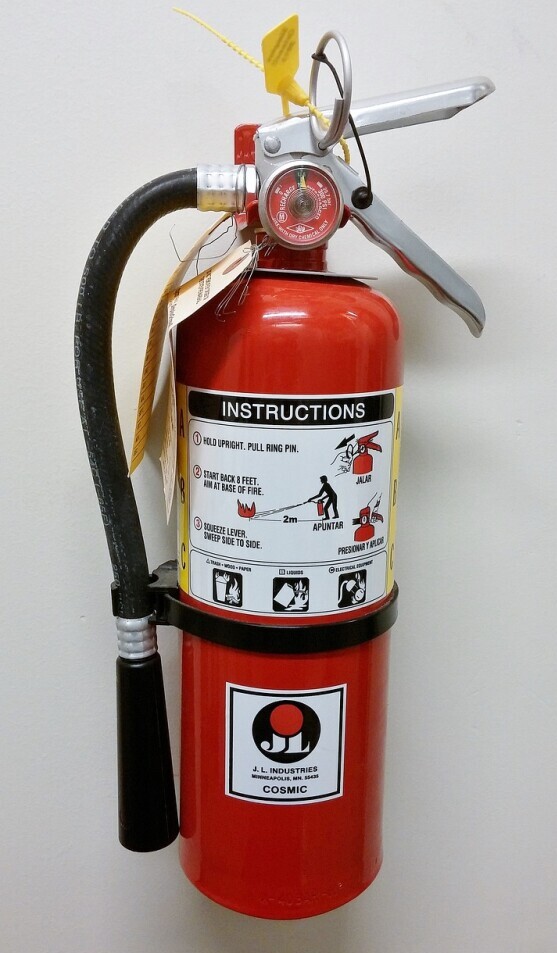Fires are one of the most devastating disasters that can strike any home, and apartment dwellers face unique challenges when it comes to fire safety. Due to shared walls, ceilings, and hallways, a fire in one unit can quickly spread to others, endangering not just your belongings but the lives of your neighbors as well. This makes it even more crucial to take proactive measures to prevent fires and ensure your apartment is as fire-resistant as possible.
Fireproofing your apartment is about more than just having a fire extinguisher on hand. It involves taking steps to reduce fire risks, creating an escape plan, and making sure your living space is equipped to handle potential emergencies. In this blog post, we’ll explore practical and effective steps to help you fireproof your apartment, so you and your loved ones can stay safe in case of an emergency.
1. Install Smoke Detectors and Fire Alarms
The first and most important step in fireproofing any living space is to make sure your smoke detectors and fire alarms are installed and functioning properly. Smoke detectors are essential for alerting you to the presence of smoke and providing crucial time to escape before a fire spreads.
Best Practices:
- Test smoke alarms regularly (at least once a month) to ensure they are working. Press the test button and listen for the alarm. If it doesn’t go off, replace the batteries or consider installing a new unit.
- Change the batteries in your smoke detectors at least once a year, or more frequently if needed.
- Consider upgrading to smart smoke detectors, which can send notifications to your phone in case of an emergency, even if you’re not home.
- Make sure there’s a smoke detector in each bedroom, hallway, and on every floor of your apartment.

2. Create an Escape Plan and Practice It
Knowing how to escape in the event of a fire is just as important as preventing one. Many people think they’ll be able to figure it out in an emergency, but stress, smoke, and chaos can impair judgment. Having a pre-planned route and practicing it can make all the difference in an actual emergency.
Best Practices:
- Map out escape routes: Identify all possible exits from your apartment, including windows, doors, and hallways. Make sure everyone in your household knows how to get to the nearest exit.
- Keep paths clear: Avoid blocking exits with furniture, clutter, or other obstructions. Make sure windows are easily accessible and can be opened quickly.
- Plan a meeting point: Designate a spot outside the building where everyone should meet once they’ve escaped the apartment. This ensures that everyone is accounted for.
- Practice regularly: Conduct fire drills at least twice a year to ensure that everyone knows what to do in case of a fire.
3. Upgrade Your Apartment’s Electrical System
Faulty or outdated electrical systems are one of the leading causes of apartment fires. Overloaded outlets, frayed wires, and malfunctioning appliances can spark fires that spread quickly in confined spaces.
Best Practices:
- Avoid overloading outlets: Don’t plug too many devices into a single outlet. Use surge protectors to prevent electrical overload, but avoid daisy-chaining multiple power strips together.
- Inspect cords and appliances: Regularly check electrical cords for fraying, exposed wires, or signs of wear. If any appliance or cord seems damaged, replace or repair it immediately.
- Upgrade appliances: If your appliances are old or malfunctioning, it may be worth replacing them. Faulty stoves, fridges, and toasters are common culprits in causing fires.
- Hire a professional: If you suspect any issues with your apartment’s electrical wiring, hire a licensed electrician to inspect and upgrade the system.
4. Use Fire-Resistant Furniture and Fabrics
When it comes to fireproofing your apartment, the materials used in furniture and decor play a significant role. Upholstered furniture, curtains, and bedding made from flammable materials can catch fire easily, putting you at a higher risk.
Best Practices:
- Choose fire-resistant fabrics: Look for furniture and decor made from fire-resistant materials or fabrics treated with fire-retardant chemicals. Many stores now offer furniture with built-in fire resistance.
- Check labels: When buying curtains, rugs, or blankets, check the label to see if they are fire-resistant or flame-retardant.
- Opt for flame-retardant mattresses: Mattresses made from synthetic materials can be highly flammable. Choose a mattress that meets fire safety standards or one that has been treated with flame retardants.
5. Keep Flammable Items Away from Heat Sources
In the kitchen and throughout your apartment, heat sources like stoves, space heaters, and even candles can ignite nearby flammable materials. Taking care to store items safely and use heat sources correctly can drastically reduce the risk of fire.
Best Practices:
- Store flammable materials away from heat sources: Keep paper towels, dishcloths, and any other flammable materials away from the stove, oven, and other heat-producing appliances.
- Turn off appliances: Never leave cooking food unattended, and always turn off stoves, ovens, and space heaters when not in use. Keep portable heaters at least 3 feet away from furniture, curtains, or other combustible materials.
- Use flameless candles: While traditional candles can create a beautiful ambiance, they also pose a fire risk. Consider using battery-operated flameless candles instead, which provide the same effect without the danger.
- Keep your dryer vents clean: Lint buildup in dryer vents is a leading cause of home fires. Clean your dryer’s lint filter after each use and have your vents professionally cleaned at least once a year.
6. Install Fire Extinguishers in Key Areas
Having a fire extinguisher on hand can help you control a small fire before it escalates. In many cases, prompt action with an extinguisher can prevent a fire from spreading to other areas of your apartment.
Best Practices:
- Place extinguishers strategically: Keep a fire extinguisher in the kitchen, near the exit of your apartment, and in any area where there’s a significant risk of fire (e.g., near a furnace or fireplace).
- Check expiration dates: Fire extinguishers need to be replaced periodically. Check the expiration date and replace any extinguishers that have expired.
- Know how to use it: Make sure everyone in your household knows how to properly use a fire extinguisher. Familiarize yourself with the PASS technique: Pull the pin, Aim the nozzle, Squeeze the handle, and Sweep from side to side.

7. Minimize Clutter and Maintain a Clean Living Space
Clutter can be a fire hazard in many ways. Not only can it block exits and pathways, but it can also serve as fuel for a fire to spread more quickly. Keeping your apartment clean and tidy is an easy way to minimize risk.
Best Practices:
- Declutter your space: Avoid piling up paper, clothes, and other flammable items near heat sources. Keep pathways to exits clear at all times.
- Store combustible items properly: Store paper products, cleaning supplies, and other flammable materials in proper containers and away from heat-producing appliances.
- Regularly vacuum carpets: Carpets and rugs can accumulate dust and lint, which can catch fire easily. Regular cleaning helps to remove flammable debris.
8. Know Your Building’s Fire Safety Plan
As a renter in an apartment building, it’s essential to understand your building’s fire safety protocols. Many apartment complexes have specific guidelines for how to respond in the event of a fire, including evacuation routes, meeting points, and procedures for notifying authorities.
Best Practices:
- Familiarize yourself with the fire exits: Know where all the exits are in your building, especially if you live in a larger building with multiple floors. If your building has an elevator, know that it should never be used in a fire.
- Talk to your landlord: Ask about fire safety features in your building, such as sprinklers, fire extinguishers, and fire escape plans. Make sure you know where to find emergency exits and assembly points.
- Ensure fire safety compliance: Check that your building is compliant with local fire codes and regulations, especially if you live in an older building.
Conclusion
Fireproofing your apartment is about being proactive and taking practical steps to prevent fires and protect yourself and your loved ones in the event of an emergency. From installing smoke detectors to using fire-resistant materials, keeping your living space organized, and knowing how to handle a fire extinguisher, there are many ways to reduce your risk.
By incorporating these fire safety tips into your daily routine and maintaining awareness of fire hazards, you can help ensure that your apartment remains a safe place to live. Don’t wait for disaster to strike—take action now to fireproof your apartment and protect what matters most.
